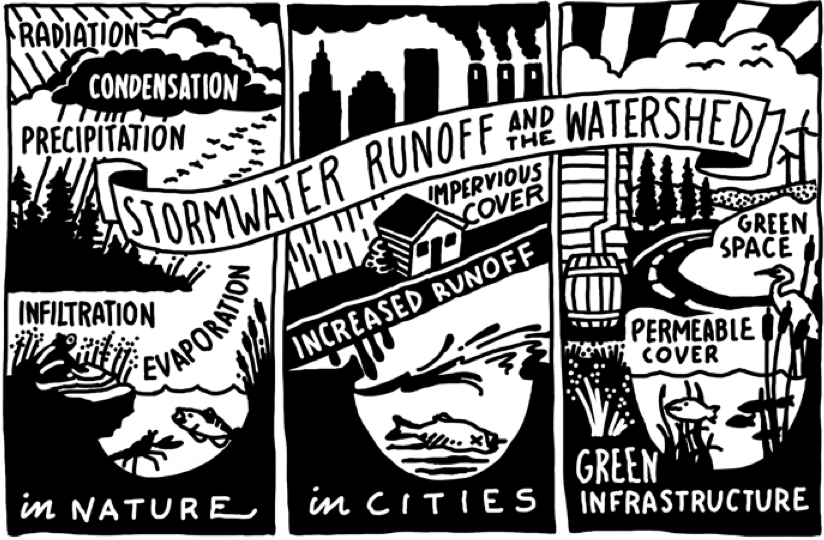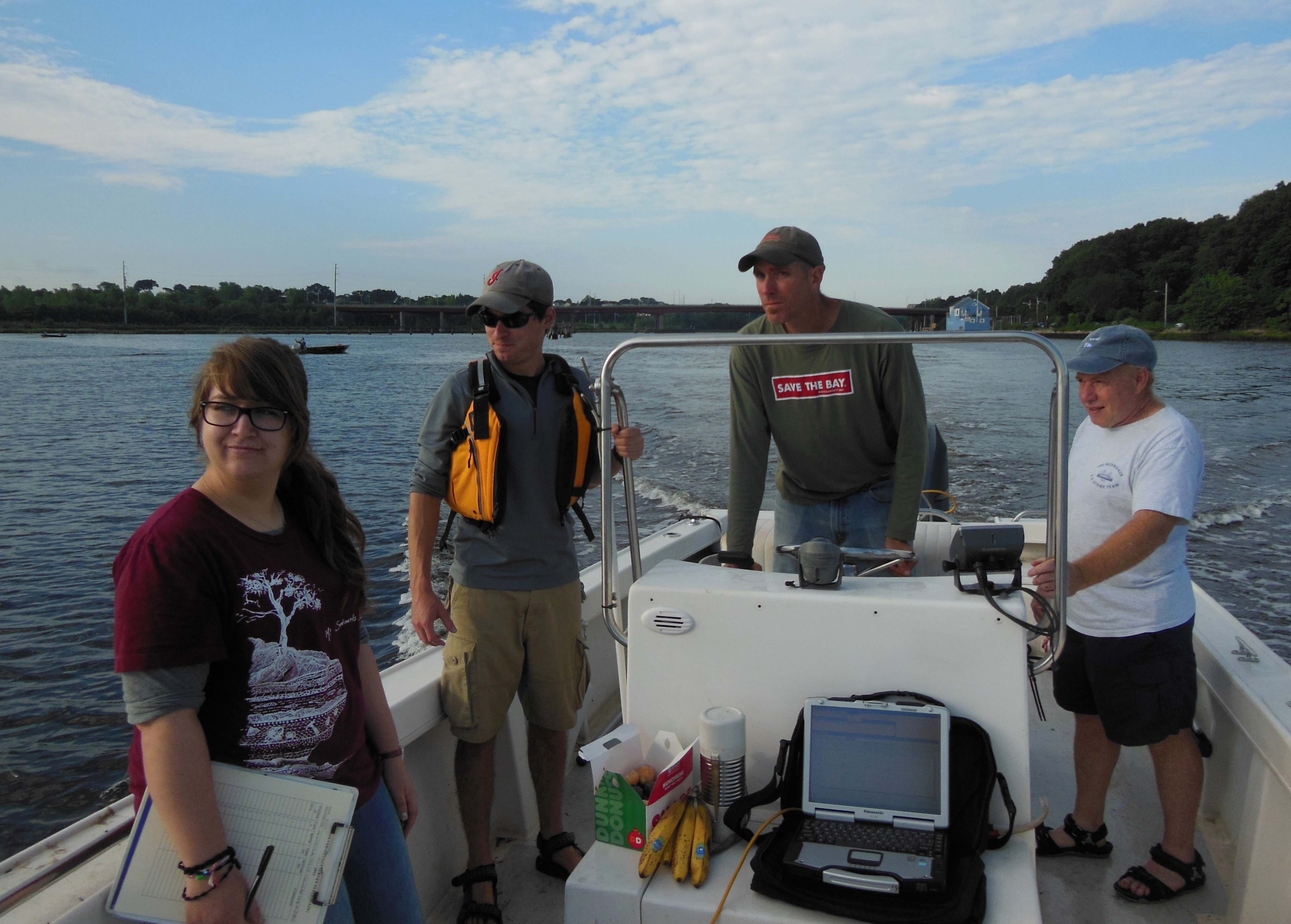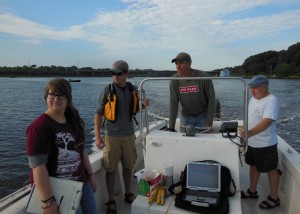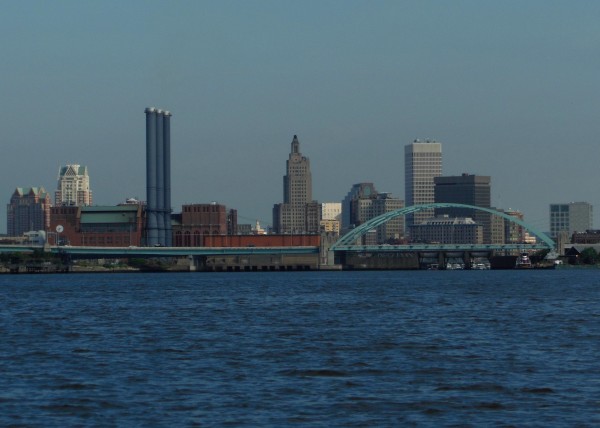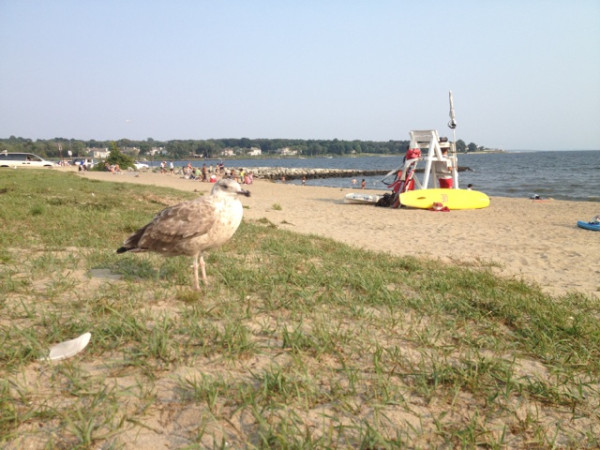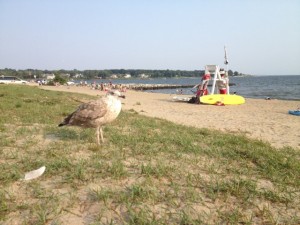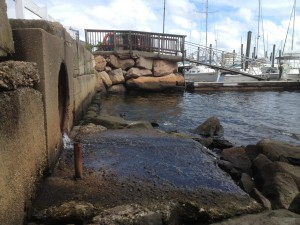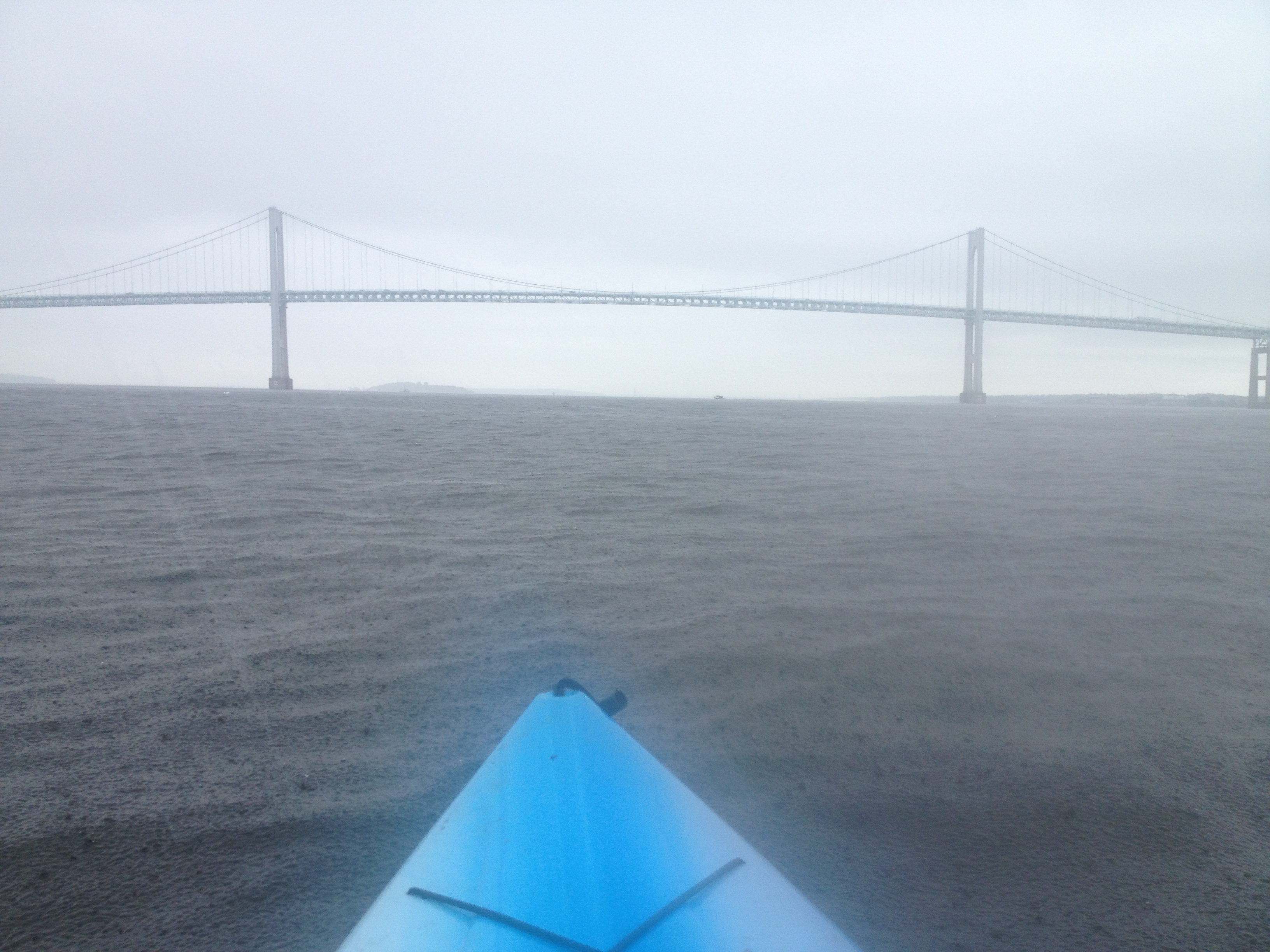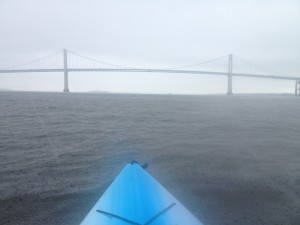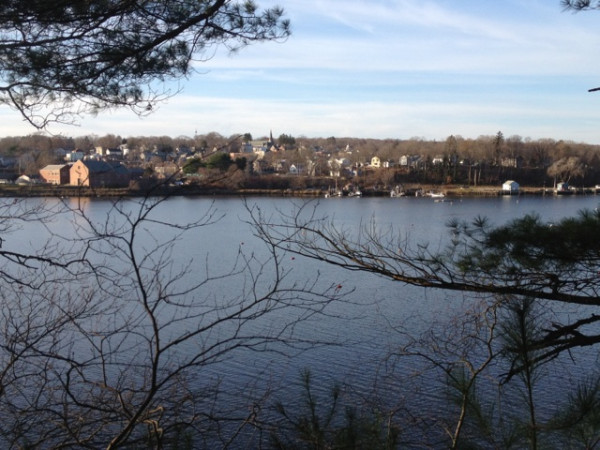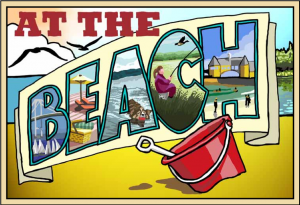
Governor’s Bay Day, when all Rhode Island state beaches celebrate the Ocean State by offering free admission and parking, was washed out by a driving rain yesterday. This is bad news for Rhode Island even if you didn’t miss a free beach day yesterday.
“Our beaches will be the bellwether of climate change,” said Judith Swift, executive director of URI’s Coastal Institute. “Not only will we lose beaches due to sea level rise, but increased precipitation will add additional pollutants to our beaches from stormwater runoff.”
Swift was speaking about the new 2014 Watershed Counts report, released today (you can read the full report here). But weather like yesterday’s is one of the reasons we should pay close attention to the report’s findings.
“Beach closures,” according to the press release, “are very much dependent upon rainfall, as stormwater flushes out pollutants and bacteria that close both beaches and shellfishing areas.”
The report explains: “Annual average precipitation … has been increasing over the last century and this trend is projected to continue. When you look at the pattern of rainfall, something else becomes apparent: the frequency of intense rainfall events has also increased. When we get large amounts of precipitation in a short amount of time, the stormwater runoff can overwhelm our treatment facilities and result in sewage being flushed into the Narragansett Bay.”
And shows it in a cartoon, as well:
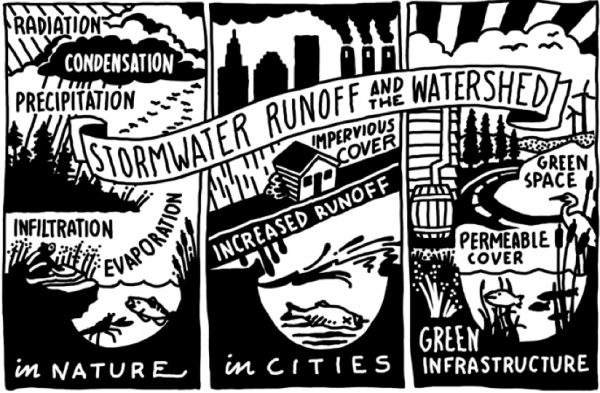
There were 41 beach closures last summer. This summer there are currently five closures – at First Beach in Middletown, the Bristol and Warren town beaches and two beaches in Tiverton. This rain event will surely lead to even more this week. (RI Future reported on the scientific causes of beach closures, their economic effects and how RI monitors the water last summer).
But the good news is while we had heavy rains last summer, we experienced fewer beach closings than previous summers. There were 86 beach closures in 2009, 55 in 2010 and 45 in 2011. The Watershed Counts report says the counter-intuitive decrease in closures can be attributed because of public investments to control stormwater runoff, sewer overflow.
“Using green infrastructure and other best management practices to protect beach water quality is paying off,” said Department of Environmental Management Director Janet Coit. “DEM welcomes the opportunity to partner with cities and towns to enhance what is a time-honored Rhode Island tradition – enjoying a glorious day at the beach.”
A clean water/open space bond on the November ballot, if approved by voters, would invest $20 million to further clean water and segregate sewage and stormwater overflow, according to the report, but that’s only a fraction of the need. “Municipalities and the Narragansett Bay Commission have identified more than $1.8 billion dollars of needed clean water in frastructure improvements ranging from wastewater treatment upgrades and storm water quality improvements to combined sewer overflow abatement projects,” according to DEM in the report.
“The opportunity to promote and invest in a beautiful Rhode Island is significant, and the need for that investment is immediate,” according to a DEM statement in the report. “Rhode Island’s greatest natural resource and a key driver to economic growth—Narragansett Bay—is threatened by polluted run-off and the damaging effects of climate change. Conversely, local food markets are booming, horticultural, and agricultural and landscape companies are doing more local business than ever, and our $2.26 billion dollar tourism sector is growing.”
According to the press release, there has been a “surprising” lack of support from the state to monitor water quality at local beaches.
“The funding for marine beach monitoring comes mostly from federal sources. The National Beach Program provided over $200,000 to both Rhode Island and Massachusetts in 2013,” it reads. “The state budgets contained no funding, despite the fact that beaches are an economic driver, and that the federal monitoring program for saltwater beaches has recently been at issue for possible elimination in federal budget talks.”

